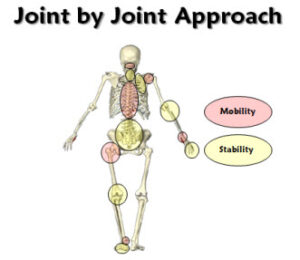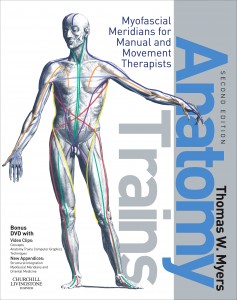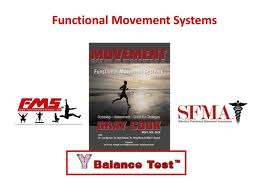SFMA (Selective Functional Movement Assessment) Recap
Here is a quick recap of the SFMA (selective movement functional assessment) and the seminar I attended this weekend.
From their website www.sfma.com, the SFMA is defined as:
“The Selective Functional Movement Assessment (SFMA) is a series of 7 full-body movement tests designed to assess fundamental patterns of movement such as bending and squatting in those with known musculoskeletal pain. When the clinical assessment is initiated from the perspective of the movement pattern, the clinician has the opportunity to identify meaningful impairments that may be seemingly unrelated to the main musculoskeletal complaint, but contribute to the associated disability. This concept, known as Regional Interdependence, is the hallmark of the SFMA.
The assessment guides the clinician to the most dysfunctional non-painful movement pattern, which is then assessed in detail. This approach is designed to complement the existing exam and serve as a model to efficiently integrate the concepts of posture, muscle balance and the fundamental patterns of movement into musculoskeletal practice. By addressing the most dysfunctional non-painful pattern, the application of targeted interventions (manual therapy and therapeutic exercise) is not adversely affected by pain.
SFMA offers doctors and physical therapists a new approach to the treatment of pain and dysfunction. Our standardized clinical model ensures isolating the cause of injury and efficient care.”

Let’s start with this. The SFMA is based on the premise of regional interdependence, which basically means every part of your body can affect another part. Pain can happen everywhere, it only tells a movement expert where the weakest link in the chain is. Obviously if you fall and break your arm, this is different situation. Go see a doctor, not a movement specialist. After the fact, some questions should be addressed. Why did you fall? Did you trip? Where you tackled? Do you have poor balance? Some of these questions tell me valuable information about your movement patterns.
Embedded in the idea of regional interdependence is a couple of logical principles. One is Mike Boyle’s joint by joint approach and the other is based upon Tom Myer’s fascial planes in his book Anatomy Trains. The joint by joint approach states the each part of the body alternates in function whether stability or mobility. If one if these parts losses its function, the body must compensate by taking away the function of another part of the body. This is where pain and dysfunction happen. The fascial planes are intertwined with movement patterns and should be considered when evaluating movement. It helps you understand how everything is connected and can lead you to a cause of the problem, which could be far from the site of pain. Yes your hand is connected all the way to your opposite foot. For more information visit
- http://www.t-nation.com/readArticle.do?id=1618485
- http://graycook.com/?p=35
- http://graycookmovement.com/?p=118
- http://www.anatomytrains.com/
In the movement world, pain is a symptom of the underlying deficiency of movement. Where the pain is doesn’t matter whether low back, neck or shoulder, the SFMA is designed to determine the cause of the pain. To me and many others this is logical; however some people need solid research before they believe anything. There are more and more studies validating regional interdependence. One off the top of my head looks at limited hip internal rotation and correlates it to back pain.
So the SFMA has 7 full body movement tests, which contain movements which you do every day. The purpose of these tests is to determine the cause of your pain. If you do not have pain, the SFMA is not for you. Another system, the FMS (functional movement assessment) is designed to look at more complex movement patterns. The SFMA takes the 7 tests and breaks them into parts in order to determine the cause. It is very complicated to the untrained individual, however once the logic is understood, it becomes a powerful assessment to incorporate into a physical exam.
The SFMA’s main purpose is to determine if you have a stability or mobility problem. In basic terms, if you have a stability problem your body cannot stabilize to perform movements so your body will create stability by creating tension in muscles. Stretching will do nothing for a stability problem. Mobility means you cannot perform a movement due to a lack of mobility. This could be a joint problem, soft tissue problem or a neural problem.
Two more points I want to address quickly. The first one is the SFMA is another tool for a clinician to have. A very powerful one nonetheless, but just another tool. It is not meant to replace anything you do as a clinician in your physical exam or everyday treatment, it is just meant to guide you in a logical direction. Time spent in a logical manner during the exam will save treatment time. And patients will appreciate that, because you are getting them better faster rather than coming in the standard 3 times for 4-6 weeks and then maintenance care after. Other parts of the exam such as a posture analysis, gait analysis, neurological testing, MRS, respiratory, cardiac and chest exam should not be disregarded just because you have another tool in your toolbox.
The last point is you should not exercise if you do not have good movement or pain. No pain no gain is not a good quote to live by. I am not telling you not to exercise just because you cannot touch your toes or cannot squat, I just don’t think you should load a squat in the gym if you do not have the stability and mobility to perform a perfect squat. I just think you should be working on your movement at the same time. Loading or adding weight to a system which cannot handle it is a bad thing. A Ferrari engine does not work in a Toyota body.
Now to the seminar. This my second time taking the SFMA level 1. The first time I took it was last year. I think it is one of those things you should take as many times as possible because each time you get different information from different viewpoints depending on who teaches it. I was not using it every day like I am now, so taking the course again was well worth it. The SFMA takes you to the next level. Being able to treat a low back is one thing, but if the cause is not addressed the back pain will keep coming back.




